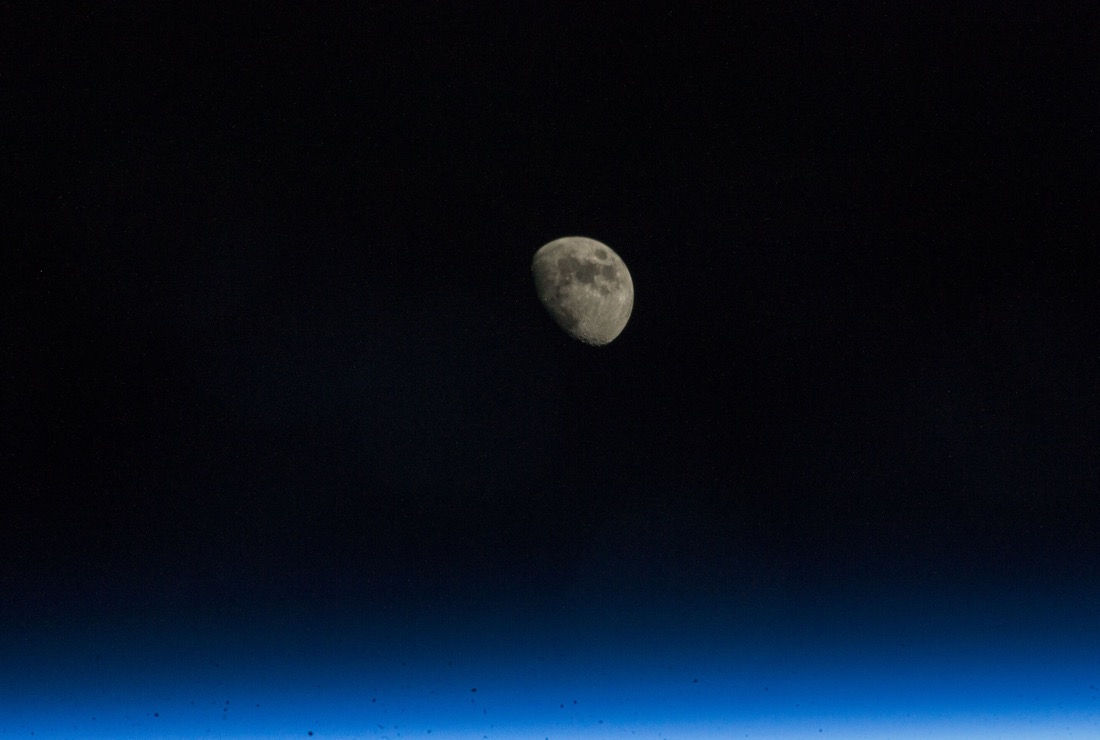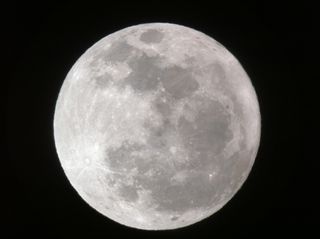
What If the Moon Disappeared Tomorrow?

Ah, yes, the moon. To it, over it, shooting for it. Blue, green. Pies, faces, shines, lighting. And I haven't even gotten to all the Luna-based concepts. Earth's moon plays a significant role in our culture, language and thoughts.
But does it … you know … matter? If it disappeared in the blink of an eye tomorrow (and for discussion's sake let's assume it does so nonviolently), would we even notice? Would we even care?
Well, it depends ….
Do you like tides?
Gravity — at least the Newtonian kind — is pretty straightforward: The closer you are to something, the stronger its pull of gravity. So stuff that's closer to the moon gets a stronger gravitational tug, and stuff that's farther away gets a weaker one. Easy-peasey. When looking at the effects of the moon on the Earth, you can essentially boil it down to three parts: The Earth itself, the ocean-close-to-the-moon and the ocean-far-from-the-moon. [50 Interesting Facts About the Earth]
On any given day, the ocean closest to the moon gets a bonus gravitational pull, so it rises up slightly, reaching out in watery embrace to what it can never reach. And since the ocean is so big, all the water from one horizon pushes up against water from the other, resulting in a fantastic tidal bulge.
OK, tide on one side of our planet, done. But what about the other? The solid rocky bits of the Earth are closer to the moon than the ocean on the far side, so the Earth too gets a little more snuggly with the moon, leaving the far-side ocean behind. Result? Tides on the far side. From the perspective of someone standing on Earth, it looks like that ocean is rising up, but really it just doesn't get to join the party. And there you have it: two tides on opposite sides of the Earth. [Earth from Above: 101 Stunning Images from Orbit]
If the moon disappeared, we wouldn't be totally out of tidal luck; the sun also stretches and squeezes the Earth, so our surfing opportunities wouldn't be completely eliminated.
Get the Space.com Newsletter
Breaking space news, the latest updates on rocket launches, skywatching events and more!

Do you like 24 hours in a day?
The Earth used to spin on its axis faster than it does today. As in, way faster. After the hypothetical giant impact that led to the formation of the moon (which is the topic for a completely different article, sorry, but at least you can watch me explain it in this video), the Earth's day was as short as 6 hours. How did it get to a leisurely 24?
That's right, it was the moon! The moon makes some pretty nice tides, but the Earth is also spinning on its axis. That spinning physically drags the tidal bulges around the planet. So instead of the tides appearing directly beneath the moon, they're slightly ahead of it, orbitally speaking.
So you've got a big lump of extra ocean water in a place where it's not supposed to be. Since gravity is a two-way street, that lump pulls on the moon. Like tugging a reluctant dog on a leash, that tidal bulge yanks on the moon bit by bit, accelerating it into ever-higher orbits.
By the way, the moon is slowly getting farther away from Earth. And that energy to accelerate the moon has to come from somewhere, and that somewhere is the Earth itself: Day by day, millennium by millennium, the Earth slows down, converting its rotational energy into the moon's orbital energy.
If you took away the moon, it's not like this process would reverse, but it wouldn't keep going. That might or might not be a good thing, depending on how much you like the length of your workday.
Do you like seasons?
The Earth's axis is tilted, and that tilt can change with time. No biggie, all the planets do it; it's fun. But what'snot fun is when the tilt changes rapidly. What would happen if Antarctica pointed straight at the sun for 24 hours a day, plunging North America and Europe into permanent darkness? And then a few hundred thousand years later it flipped over? We take the long-term regularity of our seasons for granted, and we might have the moon to thank for it.
Those kinds of crazy wild swings in the axial tilt are due to resonances, or unlucky interactions with distant objects in the solar system. For instance, letꞌs say that one day in its orbit the Earth's axis just happens to point away from the sun, and Jupiter is hanging out in that direction at the same time. And let's say that happens again … and again … and again. Every time Earth's axis and Jupiter line up, it gets a super-tiny gravitational pull. At first it's nothing. But over millions of years it can add up. Before you know it, the accumulation of tugs has flipped the Earth over like a pancake.
What might stabilize this is the moon: it's really, really big (at least compared with the Earth), and orbits us pretty fast. All that angular momentum (rotational energy) prevents the other planets from playing any axial shenanigans.
[Watch: I explain how the moon affects the seasons in this video.]
Or not. The moon may actually be hurting us in the long term, since it's slowing us down, which makes us more susceptible to the intrigues of the outer planets. But that's a billion-year problem anyway, and if the moon disappeared tomorrow, our seasons would still be seasonal for a really long time.
So, besides the tides, would we notice a disappeared moon? Well, yes, because it's really big and bright, and there'd be nothing to howl at anymore. But would it affect us? Not really. So as for the moon … I'm over it!
Paul Sutter is an astrophysicist at The Ohio State University and the chief scientist at COSI Science Center. Sutter is also host of the podcasts Ask a Spaceman and RealSpace, and the YouTube series Space In Your Face.
Learn more by listening to the episode “What if the moon disappeared?” on the Ask A Spaceman podcast, available on iTunes and on the Web at http://www.askaspaceman.com. Ask your own question on Twitter using #AskASpaceman or by following Paul @PaulMattSutter and facebook.com/PaulMattSutter.
Join our Space Forums to keep talking space on the latest missions, night sky and more! And if you have a news tip, correction or comment, let us know at: community@space.com.

Paul M. Sutter is an astrophysicist at SUNY Stony Brook and the Flatiron Institute in New York City. Paul received his PhD in Physics from the University of Illinois at Urbana-Champaign in 2011, and spent three years at the Paris Institute of Astrophysics, followed by a research fellowship in Trieste, Italy, His research focuses on many diverse topics, from the emptiest regions of the universe to the earliest moments of the Big Bang to the hunt for the first stars. As an "Agent to the Stars," Paul has passionately engaged the public in science outreach for several years. He is the host of the popular "Ask a Spaceman!" podcast, author of "Your Place in the Universe" and "How to Die in Space" and he frequently appears on TV — including on The Weather Channel, for which he serves as Official Space Specialist.